Guided missiles of the Spike family (Israel)
Spike nlos
The first representative of the family of rockets was the Spike NLOS (Non-Line Of Sight) product. As the name implies, this rocket was designed to attack targets located at a relatively large distance from the launcher. The development of the Spike NLOS rocket was launched in the late seventies, and in 1981 it was adopted by the Israel Defense Forces. However, for a long time this system remained secret. Its existence was announced only in 2010 year. At the same time, a rocket was offered to potential foreign buyers.
Spike NLOS rocket is the largest and heaviest in the whole family. Its starting weight reaches 75 kg, and its length exceeds 1,5 m. Such dimensions and weight allowed equipping the rocket with a solid-fuel engine capable of bringing the flight range to 25 km. Missiles are delivered in rectangular transport and launch containers. Containers are installed on the launcher, which, in turn, can be used with various platforms. For example, the Israeli army is actively using Spike NLOS missile systems based on American-made HMMWV army vehicles.
Spike NLOS rocket has a cylindrical body of large elongation with a hemispherical head fairing. X-shaped wings are mounted in the middle part of the body, and steering wheels of similar design are mounted in the tail. To reduce the dimensions of the rocket in the transport position, the wings are stacked along the body by turning forward and unfold after exiting the WPC.
Spike NLOS guided munitions can be equipped with warheads of various types. Depending on the combat mission, a cumulative or high-explosive fragmentation warhead can be used.
Spike NLOS is equipped with an original guidance system, which includes various equipment. The missile can be induced at the target independently or at the command of the operator. In the latter case, a video system is used, transmitting the signal to the operator console. The control and guidance systems used provide greater flexibility in the use of the rocket. Thus, the operator can find and capture the target after launching, or retarget the rocket in flight. In this case, both the “shot-and-forget” principle and the more complex “shot-sent” and “shot-rated-corrected” are implemented.
A combat vehicle equipped with a missile launcher should receive a set of equipment to monitor the situation and transfer data. To attack targets outside the direct line of sight, the Spike NLOS missile system must use third-party target designation. Intelligence units, unmanned aerial vehicles, etc. can transmit information about the location of the target.
For nearly three decades, the Spike NLOS missile system remained secret. The first combat use of this system dates back to 2006. During the Second Lebanon War, guided missiles were used to destroy Hezbollah’s facilities and fighters. A little later, Spike NLOS complexes were deployed along the border with the Gaza Strip.
The first reports of the existence of the Spike NLOS missile system appeared in 2009, when Rafael began promoting it on the international arms market. Only a year later it became known that this complex not only exists, but has been used by the Israeli army for many years. In 2011, the Israeli industry received an order from South Korea to supply the missiles of the “new” model. Some other countries have shown their interest in the Spike NLOS complex.
Spike anti-tank missile systems
Based on the Spike NLOS long-range missile, a number of ammunition was developed, designed to arm infantry units in need of modern means to destroy armored targets and enemy fortifications. Since the early nineties, Rafael has developed the Spike-SR, Spike-MR and Spike-LR missile systems. These systems differ in a number of parameters, but they have a common purpose - the defeat of enemy armored vehicles.
The most “junior” representative of the Spike family is the wearable Spike-SR (Short Range) complex. This complex is remotely similar to anti-tank grenade launchers, since the objective of the project was to reduce the size and weight of the system as much as possible while maintaining acceptable performance. The Spike-SR complex consists of a launching device, a transport and launch container and a rocket. Before launching the rocket, the operator of the complex must attach a starting device to the container. The launcher includes a screen that displays the image of the rocket's GOS. Having found the target, the operator can launch a rocket. In a ready-to-use form, the complex has a length of no more than 1,5 m and weighs about 9 kg. Rocket launch is made from the shoulder, as is the case with anti-tank grenade launchers.
Due to its reduced size and weight, the Spike-SR rocket has limited characteristics. This product is capable of hitting targets at ranges from 50 to 800 m. An uncooled infrared homing head is used to search for a target. The missile is equipped with a cumulative warhead capable of penetrating up to 700 mm of homogeneous armor. The launch is carried out according to the “launched-forgotten” scheme and reduces the risk for the operator, since he does not need to monitor the flight of the rocket.
Spike-SR rocket is a seriously redesigned and simplified version of Spike NLOS. Much closer to the base model is the Spike-MR (Medium Range - “Medium Range”) rocket. The developers of this complex reduced the size and weight of the rocket, taking into account other requirements for launch range, but left the basic principles of the rocket systems. Spike-MR is designed to destroy targets in the 200-2500 range of m.
The Spike-MR complex consists of several components: a transport and launch container with a rocket, a control panel with a power source and a tripod machine. The missile in the TPK weighs 13 kg, the remote - about 10 kg. The total weight of the complex in ready-to-use form is 26 kg. A machine tool has been developed that allows the rocket complex to be mounted on a suitable chassis.
To search for targets in the Spike-MR complex, an optical sight mounted on the control panel is used. The rocket is equipped with an optical-electronic guidance system, similar to the corresponding Spike NLOS units. Thus, the operator of the "Spike" medium range can leave the position immediately after the shot or adjust the rocket's trajectory during the flight, including retargeting it. A fiber optic cable is used to connect the rocket and the console. The defeat of the target is provided by a tandem cumulative warhead.
The means for destroying targets at distances up to 4 km is the Spike-LR (Long Range) complex. This system is a modification of the medium-range complex with some modifications aimed at increasing the firing range. To increase this parameter, a solid-fuel engine of a different design is used. Spike-MR and Spike-LR have similar guidance systems that can operate both autonomously and under the control of an operator.
Anti-tank systems of the Spike family have become quite widespread. This weapon interested the military of Israel and many other countries. Since the end of the nineties, Spike-SR, Spike-MR and Spike-LR systems have been shipped to Azerbaijan, Belgium, Germany, Italy, Peru, Chile and other states in Europe and South America. The total number of issued complexes exceeds 10-15 thousands.
Universal Spike-ER rocket
The success of a number of complexes of the Spike family led to the emergence of a new ammunition designed for use by combat aviation. The goal of the Spike-ER project (Extended Range - “Extended Range”) was to create a missile system with increased range and flexibility of use. This system was originally developed taking into account the use with armored vehicles and attack helicopters. The design of the Spike-ER rocket is based on previous developments of the family, however, it has several interesting differences.
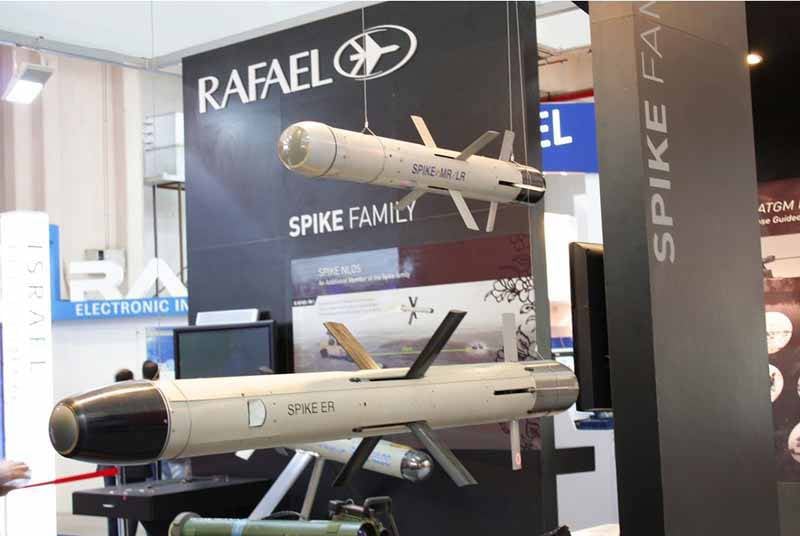
The rocket of the new model is large in comparison with the previous ones, its starting weight (in TPK) reaches 33 kg. At the same time, due to the new solid-fuel engine, the maximum flight range has been increased to 8 km. The minimum launch range is 400 m. The Spike-ER can be used as an additional weapon for armored vehicles or helicopters of various types. For the use of missiles with this technique apply the appropriate launchers with a set of control equipment.
The Spike-ER rocket is equipped with an optical-electronic guidance system similar to that used on a number of other products of the family. Provides various modes of operation, expanding the range of tasks. The missile carries a tandem cumulative warhead with armor penetration level 1000 mm homogeneous armor.
The Spike-ER complex with the ability to install on helicopters attracted the attention of the military from several countries. In addition to the Israeli army, these systems were purchased by Italy, Finland, Chile and other countries. Helicopters UH-60, Eurocopter Tiger, AW-129 and others are used as carriers of the Spike-ER rocket. In addition, modification of the complex based on various chassis has gained some acceptance.
Mini-spike
In 2009, the Mini-Spike project was first introduced. This product is similar in its purpose to the Spike-SR short-range missile and has similar characteristics. At the same time, however, the “Mini-Spike” is seriously different both in terms of design, and by methods of use.
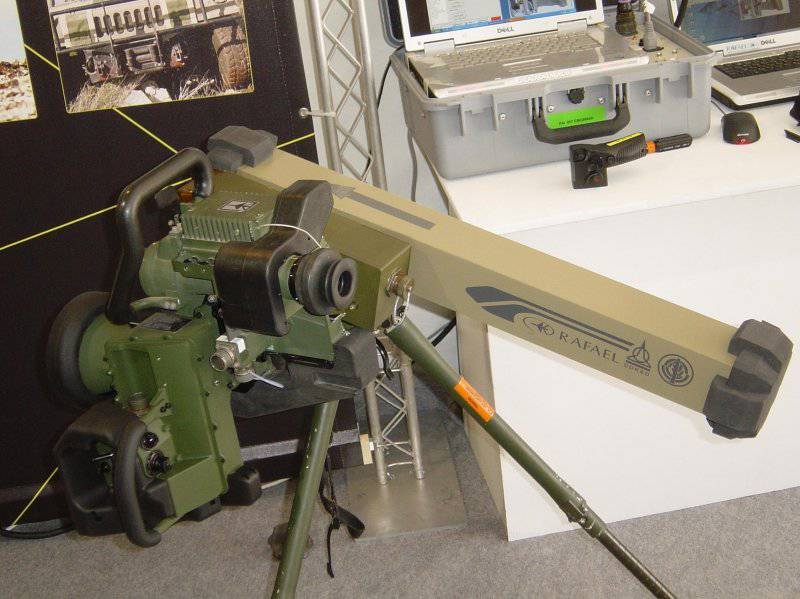
The Mini-Spike complex has a total weight at the level of 12 kg, the rocket itself weighs slightly more than 4 kg. The guided missile has a cylindrical body with a thickened head part of a characteristic shape. In the middle part of the body there are folding X-shaped wings, behind which are located four rudders. All planes in the transport position are added. The Mini-Spike missile is supplied in a rectangular transport and launch container, with fasteners for the control panel.
The complex includes a rocket with a container, a remote control and a light tripod. In the transport position, all units of the complex are placed in a satchel-backpack. One fighter can carry launchers and two containers with missiles. When installing the Mini-Spike complex on a vehicle, the mobile ammunition load increases according to the chassis capabilities.
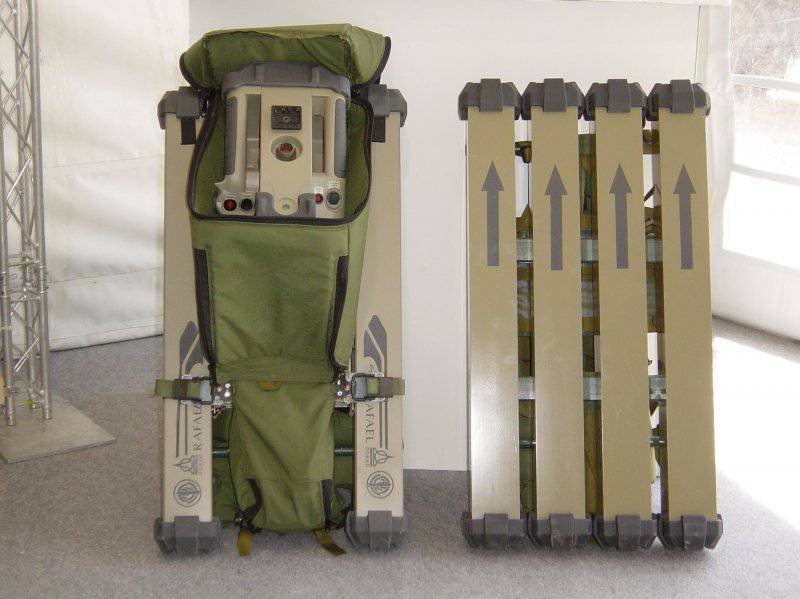
The Mini-Spike rocket is equipped with an optical-electronic control system, which is a simplified version of the aggregates of previous products of the Spike family. The operator of the complex has the ability to determine the target and launch, as well as to retarget the rocket in flight or fully take control. Transmission of video signals and commands is carried out via a two-way radio channel.
The warhead is high-explosive fragmentation designed to destroy manpower and unprotected enemy equipment. If necessary, the operator can turn off the fuse, as a result of which the warhead is not undermined and the target is hit only by the rocket’s kinetic energy. This feature is designed to minimize collateral damage when attacking small targets in difficult conditions.
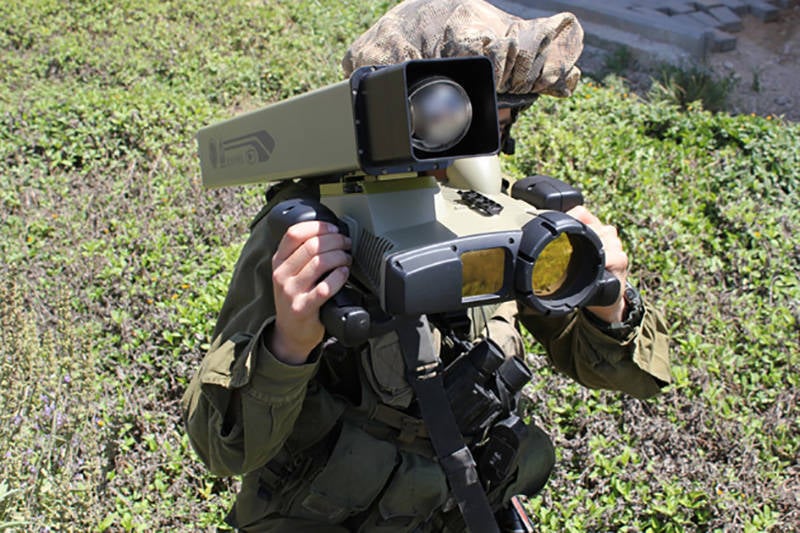
Reducing the size of the rocket and the complex as a whole has affected their characteristics. The maximum shooting range does not exceed 1,2 km. Thus, the Mini-Spike system occupies an intermediate position between the Spike-SR and Spike-MR complexes.
The Mini-Spike missile system is currently being tested and refined. Exact information about future shipments is not yet available. Probably, the completion of all the work will lead to the emergence of contracts for the supply of such weapons.
***
The Spike family of the Israeli company Rafael’s Spike is of great interest in terms of technology, and is also notable for its success in the arms market. Based on common technical solutions, Israeli designers managed to create several missile systems suitable for solving various combat missions in a wide range of ranges.
Units armed with Spike missiles of different models are capable of attacking armored vehicles and enemy manpower with high efficiency at a distance from 50 m to 25 km. An interesting combined control system with a number of original capabilities significantly increases the effectiveness of the use of rockets. To date, Spike missiles of various models have become quite widespread and have become one of the most successful members of their class.
On the materials of the sites:
http://defense-update.com/
http://armyrecognition.com/
http://rbase.new-factoria.ru/
http://otvaga2004.ru/
http://btvt.narod.ru/
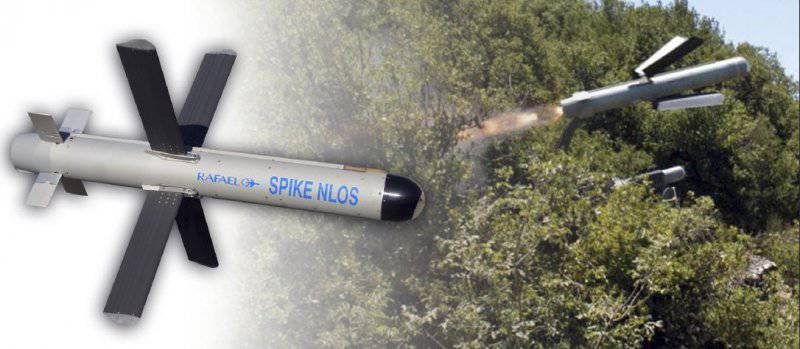

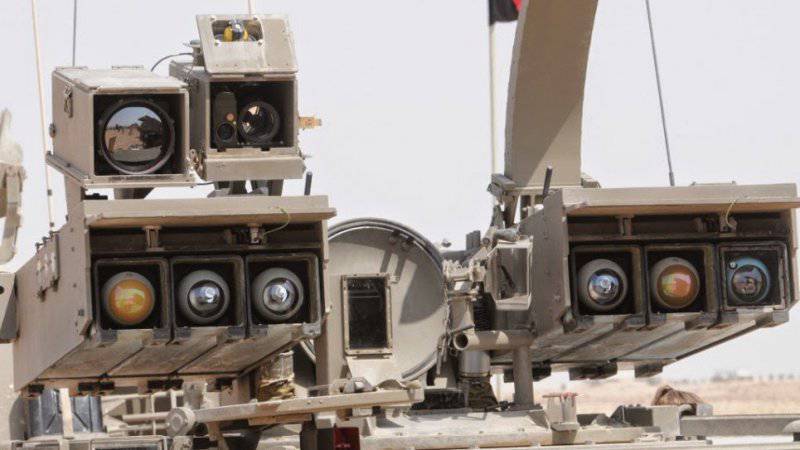
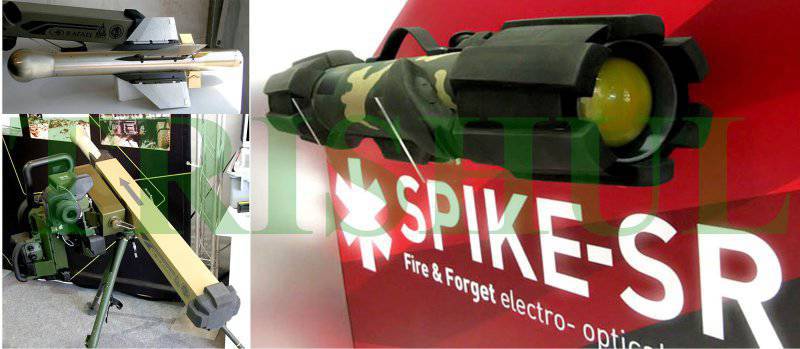
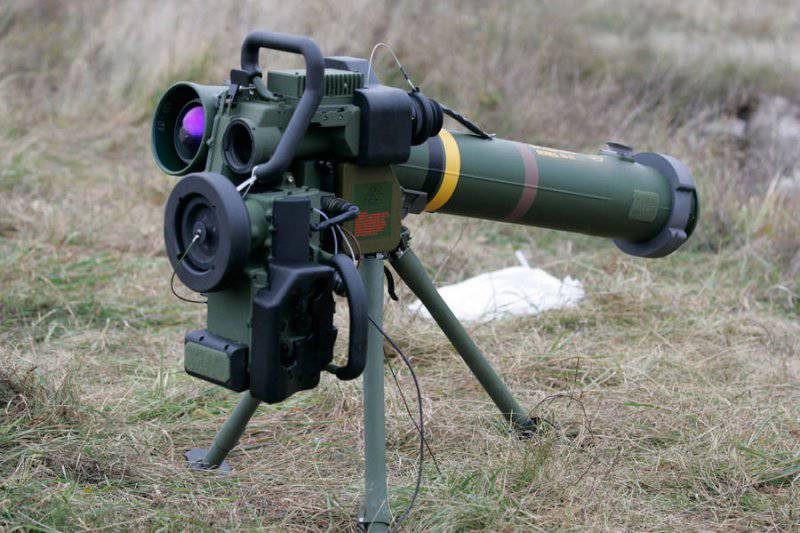
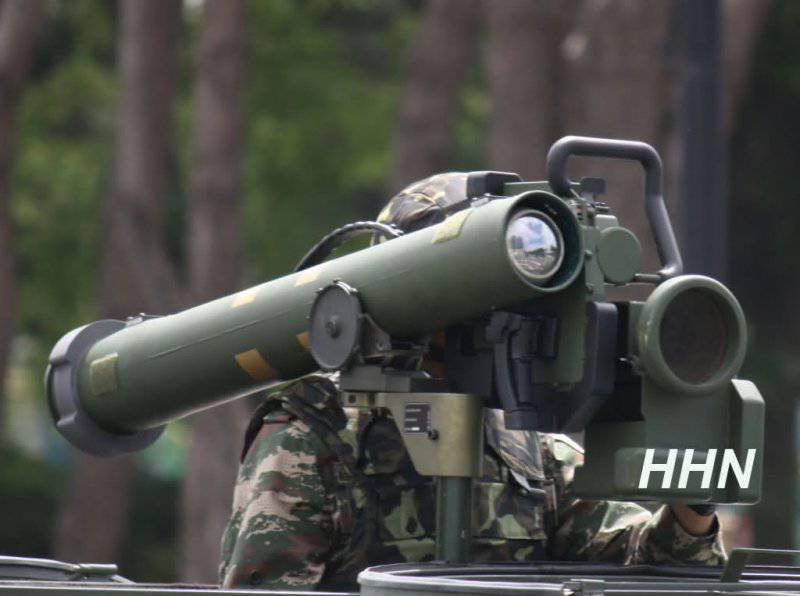
Information